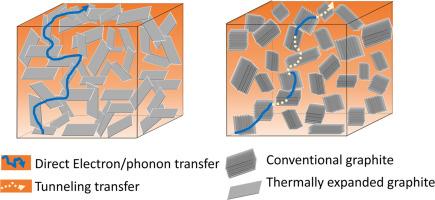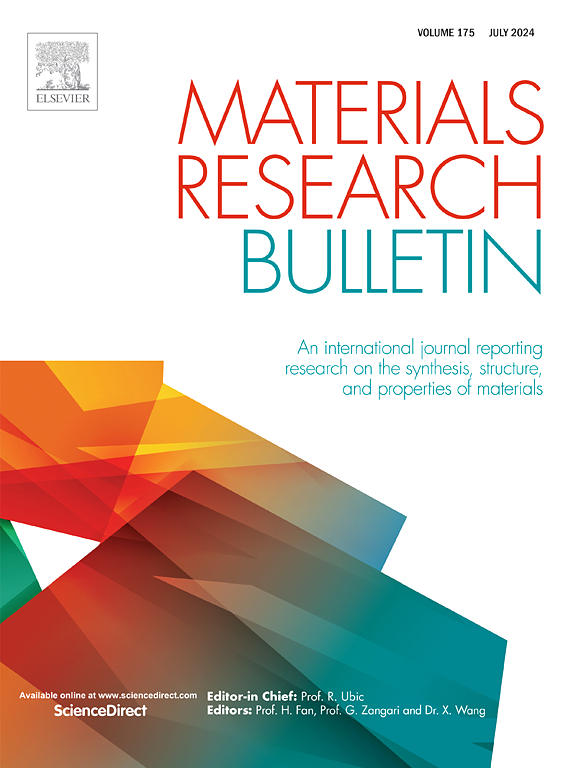Effect of graphite fillers on electrical and thermal conductivity in epoxy-based composites: Percolation behavior and analysis
IF 5.3
3区 材料科学
Q2 MATERIALS SCIENCE, MULTIDISCIPLINARY
引用次数: 0
Abstract
This work investigated a method for producing epoxy-based composites using various graphite fillers, such as natural, synthetic, and thermally expanded graphite. The study aimed to determine the impact of the filler type, size, and volume fraction on the composites’ thermal and electrical conductivity. Results indicate that the percolation model accurately represents electrical and thermal conductivity behavior, with graphite fillers forming conductive clusters in the polymer matrix. The percolation threshold for electrical conductivity varies between 2.8 and 8.5 vol.%, while for thermal conductivity, it ranges from 5.0 to 18.0 vol.%, which is twice that of electrical conductivity. This observation is due to both the electron transfer tunneling effect and the necessity of higher filler content to facilitating effective phonon transport. Notably, composites filled with thermally expanded graphite exhibit lower percolation thresholds. Understanding percolation behavior facilitates the prediction and optimization of composites with specific electrical and thermal properties for diverse applications.

石墨填料对环氧基复合材料导电性和导热性的影响:渗流行为与分析
这项研究调查了使用天然石墨、合成石墨和热膨胀石墨等各种石墨填料生产环氧基复合材料的方法。研究旨在确定填料类型、尺寸和体积分数对复合材料导热性和导电性的影响。结果表明,渗流模型准确地反映了导电和导热行为,石墨填料在聚合物基体中形成了导电簇。导电性的渗流阈值介于 2.8 至 8.5 Vol.% 之间,而导热性的渗流阈值介于 5.0 至 18.0 Vol.% 之间,是导电性的两倍。这一观察结果既是由于电子转移隧道效应,也是由于较高的填料含量对促进有效声子传输的必要性。值得注意的是,填充了热膨胀石墨的复合材料表现出较低的渗流阈值。了解渗流行为有助于预测和优化具有特定电学和热学特性的复合材料,以满足不同应用的需要。
本文章由计算机程序翻译,如有差异,请以英文原文为准。
求助全文
约1分钟内获得全文
求助全文
来源期刊

Materials Research Bulletin
工程技术-材料科学:综合
CiteScore
9.80
自引率
5.60%
发文量
372
审稿时长
42 days
期刊介绍:
Materials Research Bulletin is an international journal reporting high-impact research on processing-structure-property relationships in functional materials and nanomaterials with interesting electronic, magnetic, optical, thermal, mechanical or catalytic properties. Papers purely on thermodynamics or theoretical calculations (e.g., density functional theory) do not fall within the scope of the journal unless they also demonstrate a clear link to physical properties. Topics covered include functional materials (e.g., dielectrics, pyroelectrics, piezoelectrics, ferroelectrics, relaxors, thermoelectrics, etc.); electrochemistry and solid-state ionics (e.g., photovoltaics, batteries, sensors, and fuel cells); nanomaterials, graphene, and nanocomposites; luminescence and photocatalysis; crystal-structure and defect-structure analysis; novel electronics; non-crystalline solids; flexible electronics; protein-material interactions; and polymeric ion-exchange membranes.
 求助内容:
求助内容: 应助结果提醒方式:
应助结果提醒方式:


